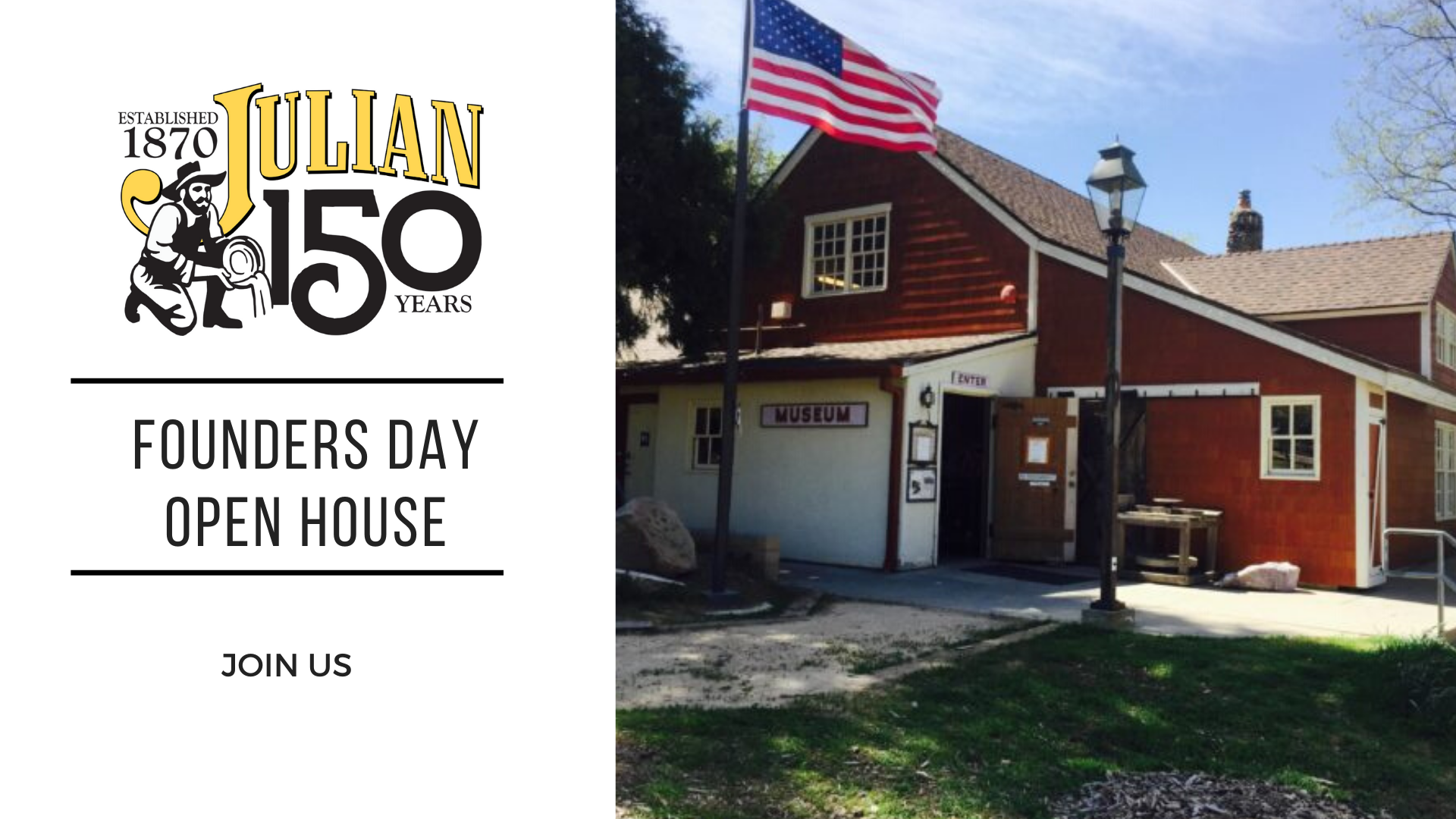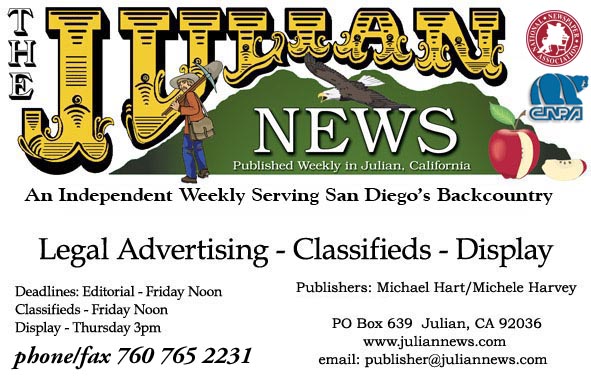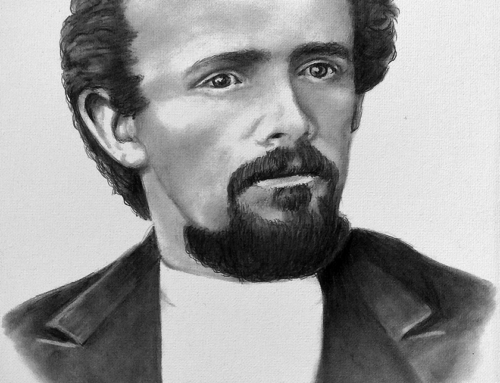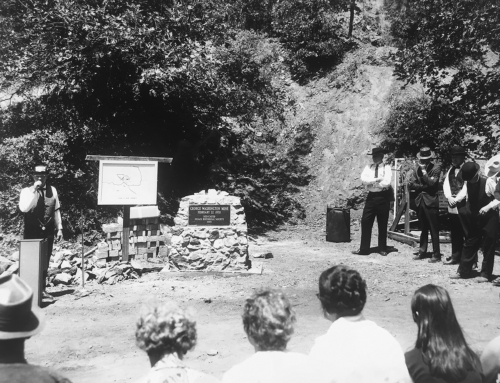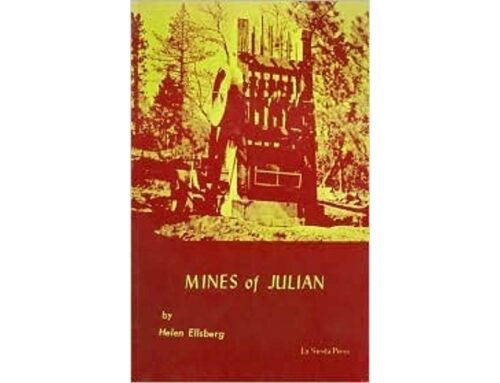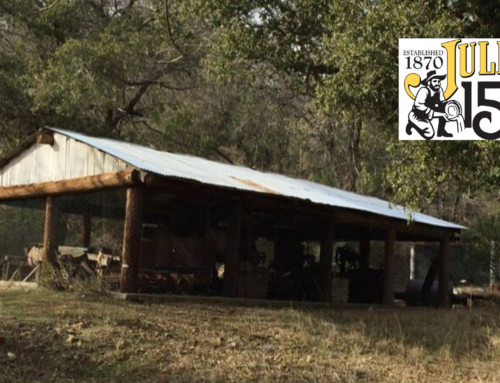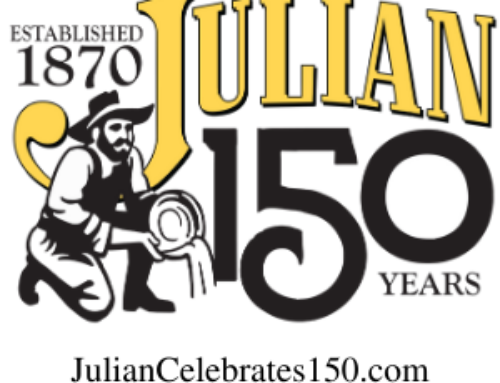Twenty some odd years after the great California gold rush of 1849, another gold rush occurred. Men flocked to this place just as they had done in 1849. There was a period of great excitement and like the rush of 1849, there were great expectations. Not all of those expectations were met. Unlike many gold rush towns, Julian City survived when the mines no longer were prosperous. It all began this way.
On November 1st, 1869, five men from Georgia arrived at the place that would soon become Julian City. They had survived the great tragedy of the American Civil War, and they had lost everything. Together they left their homes and never looked back. One of these men, Drury Dobbins Bailey, looked over the land where Julian now stands and proclaimed, “This is the prettiest place I have seen since we left Georgia. I am staying here.” Drury filed a Homestead claim on about 160 acres of land which encompassed what is now Julian.
An African American man named Fred Coleman had been living in the area years before the Baileys arrived. Local lore claims that Fred stopped to water his horse in a creek when he saw what he thought was gold. He was right, and soon there were many men panning for the placer gold in what is now called Coleman Creek. His claim was known as the Coleman Mining District. Newspaper accounts tell us that Fred found his gold in January or February of 1870. The placer gold soon was depleted and the miners began looking up stream for the source of Fred’s gold.
The excitement began to build when several gold discoveries were made north of present day Julian. The George Washington Mine, discovered on February 22nd 1870, was the first producing gold mine in what would become the Julian Mining District. Drury’s cousin, Michael S. Julian, became the Recorder for the camp. Newspapers referred to the area as the Julian Camp. Many mining claims would soon follow the Washington. The Julian Camp became Julian City when Drury Bailey hired surveyor James Pascoe to lay out a town there. Drury gave away parcels for a church, a meeting hall, a school, and to any other cause that would further the town of Julian. Drury, who had lost his home to the Civil War, now had a new one.
The original town was comprised of city blocks 300’ x 200’ with allies behind the blocks (making them 300’x210’) on the Northeast side (that still exist today). The streets were designated to be 60 feet wide with Main and Washington Streets being 80’ wide, the allies were 10 feet wide. Only Main and Washington in name survive today. Originally there was; San Antonio, Galveston, Houston, Ellen, Woods, Colorado, Austin, Hamilton, Grant and Drury Streets running parallel to Washington. With numbered streets; First through Ninth parallel to Main. The town was laid out much larger than the topography would allow. Lots within the block were 25’ x 100 (24 lots to the block). Houston Street became ‘A’, Ellen = ‘B’, Drury = ‘C’, Seventh is the Current 4th, Sixth = 3rd, Fifth = 2nd with Fourth being 1st.
This Saturday (March 14) the Pioneer Museum will host a “Founders Day” open house from 11am to 3pm commemorating the founding of Julian. Docents will be available to give you a background and history of the town including special guests from the African American Museum of San Diego, to offer insights of some of the original Back Pioneers. Members of the Bailey family may also be in attendance and we could also have someone performing on one of the museums vintage pianos.
This will be a casual day to visit as the museum has updated many of it’s exhibits and is always a popular destination for visitors. During the open house donations will be gladly accepted to continue the tasks of archiving Julian’s history and expanding and improving on the exhibition space.
The Pioneer Museum and Pioneer Park are located between Coleman Circle and the corner of 4th Street and Washington (Hwys 78/79) at the entrance to town.
Thank you to the Julian News for this post

